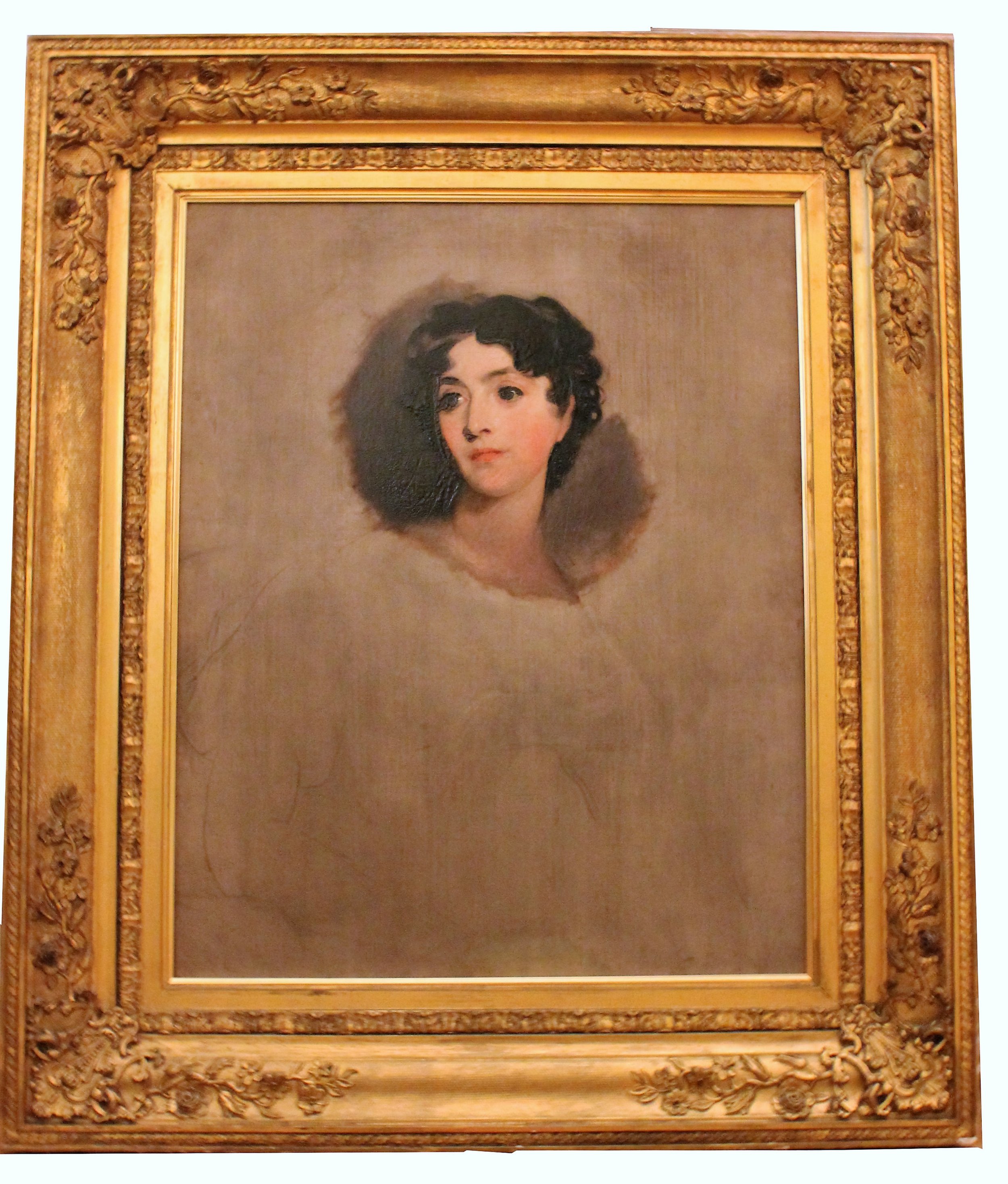Sir Thomas LAWRENCE PRA FRS (1769 – 1830)
Portrait of Anne, Lady Ellenborough
1811
oil on canvas
36 1/8 x 28 inches,
48 x 41 inches, inc. frame
Price: Sold
Provenance:
- 1811 - Probably given by the sitter to her friend Miss Locker
- 1917 - Chase Estate Sale, American Art Galleries (Lot 351)
- Mrs. Louis C. Gerry, Private Collection, Pennsylvania
- 2013, 18 June - Old Masters Sale, Freeman’s, Philadelphia, USA
-Private Collection, London
Literature
- Kenneth Garlick. Sir Thomas Lawrence, A Complete Catalogue of the Oil Paintings, 1989, page 183.
- C.K Ogden. Extract from Sir Thomas Lawrence’s Letter Bag
Sir Thomas Lawrence
Thomas Lawrence was the most fashionable portrait painter of the Regency period, and by the time of his death in 1830, had become one of the most successful artists in Europe. A huge favorite of the Prince Regent and his court, he perfectly reflected the popular new Romanticism of the age (an age that was championing poets such as Byron and Shelley), with Lawrence often showing his sitters in the kind of thoughtful and emotive poses that artists seldom used in the previous classical age.
A particular format favored in some of Lawrence’s most prized works was the portrait sketch - completing only the head and shoulders of the sitter to a finished state, leaving the rest of the work appearing unfinished, sketched in with loose pencil marks, as in this Portrait of Lady Ellenborough. This kind of treatment, with its suggestion of intimacy and a half-finished process, was one of Lawrence’s most inventive and modern contributions to portraiture.
Right from the start, Lawrence had shown marks of genius. At the age of 10, he was supporting his whole family by painting pastel portraits. By 21 he had won a royal commission from Queen Charlotte. Although self-taught, he was to rise to become President of the Royal Academy – an astonishing achievement - and is recognized as one of the most influential and significant artists of his day.
The Portrait of Lady Ellenborough
Anne, Lady Ellenborough, the sitter in this portrait, was the wife of Edward Law, later 1st Baron Ellenborough. Her portrait was painted by a number of artists, including Reynolds, Hayter, and Lawrence.
Lawrence painted Lady Ellenborough on two occasions, both in 1811. The present picture was the first of these, done at the beginning of August that year. There arose a dispute over the payment for the painting, and what is cited as being “Lord Ellenborough’s overbearing manner in dealing with the painter”. It was decided that the work itself would be given to Lady Ellenborough’s close friend Miss Locker (see ‘Sir Thomas Lawrence’s Letter Bag’ by C.K. Ogden), and consequently, a further portrait of Lady Ellenborough was commissioned from Lawrence, which was subsequently exhibited at the Royal Academy in 1813.
In his 1989 catalogue raisonne of Thomas Lawrence, Kenneth Garlick lists the two portraits of Lady Ellenborough, affirming that: “the unfinished first version … was given to Lady Ellenborough’s friend, Miss Locker.”
There are some interesting letters which survive between Lawrence and Lady Ellenborough which refer to the period of this portrait commission. From August 1811, Lady Ellenborough to Lawrence:
“Lady Ellenborough was much disappointed at not finding Mr. Lawrence at home when she called this morning, for altho' he may not be entirely satisfied with the View he has taken of the Countenance, yet, as Lord Ellenborough and several of Lady Ellenborough's friends are anxious to have it finished, she begs Mr. Lawrence will fix an early hour for her next sitting, as she had rather have the present picture reduced to the smallest size, than relinquish the idea of having it completely finished before she leaves Town…”
It was agreed that the work would be given to Miss Locker. Lawrence wrote:
“Miss Locker's name occurr'd to him as that of a Lady for whom the unfinish'd Sketch might still have interest, but he consider'd the sole right of disposal of it to be Lady Ellenborough's; the act, therefore, of presenting it is entirely her own. If, indeed. Lady Ellenborough will enable Mr. Lawrence to add to the limited satisfaction Miss Locker may have in possessing it, he thinks that if Her Ladyship can oblige him with a sitting for it on Saturday at twelve, he may do something to the upper part of the Face and to the Hair that may improve its general effect.”
Lady Ellenborough did on the Saturday. Conservation work on the present portrait has revealed that there are two layers of paint as a result of reworking the hair. This is consistent with this being the first 1811 portrait.

